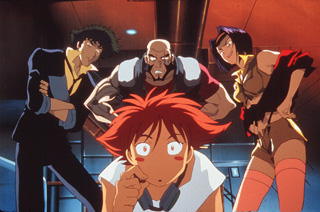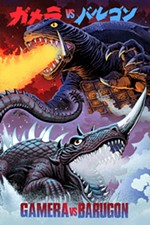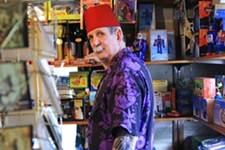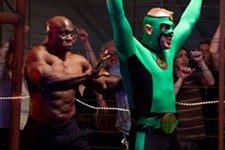Spirited Anime
Director Shinichiro Watanabe translates 'Cowboy Bebop' to the big screen
By Marc Savlov, Fri., April 4, 2003

Japanese anime has long been the Rodney Dangerfield of the animation set, trading respect for those omnipresent and garish "speed lines" that whip past characters in flight, arms akimbo, legs pumping, eyes far too large and ovoid to be Western, much less Eastern. Sure, Hayao Miyazaki picked up an Oscar the other night for his film Spirited Away, and Katsuhiro Otomo's Akira is a mind-blowing fusillade of bikerboy blowups, but in general -- at least in America -- anime is still on the low end of the totem pole. I don't care how many Dragonball Z action-figures or Pokémon trading cards your little brother has -- in America, people over the age of 16 just don't tune in to anime.
Or do they?
When the Cartoon Network began airing a little-known (in the mainstream, anyway) Japanese import three years ago, nobody had any inkling just how big it would become. With a paltry 26 episodes (or "sessions" as they're known to the show's jazzbo fans), Shinichiro Watanabe's groundbreaking Cowboy Bebop seemed a stretch for a basic cable outlet more attuned to Warner Bros. reruns and late-night black-and-white retro-fests. Cleverly packaged alongside a few of the networks more eccentric, late-night offerings (Space Ghost, et al.) and stamped with the "Adult Swim" banner, Watanabe's series took off like, fittingly enough, gangbusters, and the series' first (and probably only) feature-length film is arriving in Austin tomorrow.
The sci-fi story lines with John Woo underpinnings -- "heroes" Spike Spiegel, Jet Black, Faye Valentine, and Edward Wong (plus canine pal Ein) are futuristic bounty hunters based on Mars who travel the universe in search of mas dinero and extra cartridges -- resonated with older viewers, not just because of its later timeslot, but because of the quality of writing on the show and the top-flight animation skills of the artists, not to mention the series' obvious and protracted love affair with hot jazz and cool, retro rock & roll. It's animation with a beat you can dance to (or at the very least it plays well in the background as you nuzzle a jigger of scotch and contemplate your next move).
"When I was very young," said Watanabe from his Tokyo home base and via his giggling female translator, "even before I went to what you call elementary school, I used to read and watch Japanese comic books and anime all the time. These were the seeds of my future. After I began in elementary school, I was able to go to the movies, and that was how I would spend my weekends, watching several movies one after another and almost all of them American movies. This is how I fell in love, at so young an age, with American movies and culture."
Like the series, Cowboy Bebop: The Movie is steeped in a pop-cultural milieu that appropriates from the likes of Blade Runner and neo-noir films and writing. One of the most interesting things about the film was, according to Watanabe, unintentional and has to do with terrorists using a mysterious toxin to blackmail a city, ô la the Sarin gas attacks by the Aum Shinrikyo doomsday cult on the Tokyo subway system in March 1995. The parallels between the Tokyo incident, the fictitious world of Cowboy Bebop, and mounting concern over the possibility of a chemical or biological terrorist strike stateside are there for the taking, although Watanabe would prefer otherwise.
"I feel that in this world, living in it with a very sensitive heart and mind and with a great imagination, in not only my work but many other people's works, I think that writers and animators of science fiction and fantastic stories absorb the culture around them and sometime even precede or predict what might happen. In the case of Cowboy Bebop's plot, however, it was not something that we tried to do on purpose, to make a statement of some kind."
"Do Americans read comic books?" asks a halting Watanabe. "Do they like Cowboy?" Cross-cultural language differences aside, I assure him that Americans love both and kindly suggest that since the original series only made it to 26 episodes, a new season might be a good move now. Strike while the iron's hot, and all that.
"Oh, I don't know," he sighs. "Thank you for asking, but I want to do something new now, move forward and not look back."
Our loss. ![]()
Cowboy Bebop: The Movie opens in theatres on Friday. See Film Listings for review.










